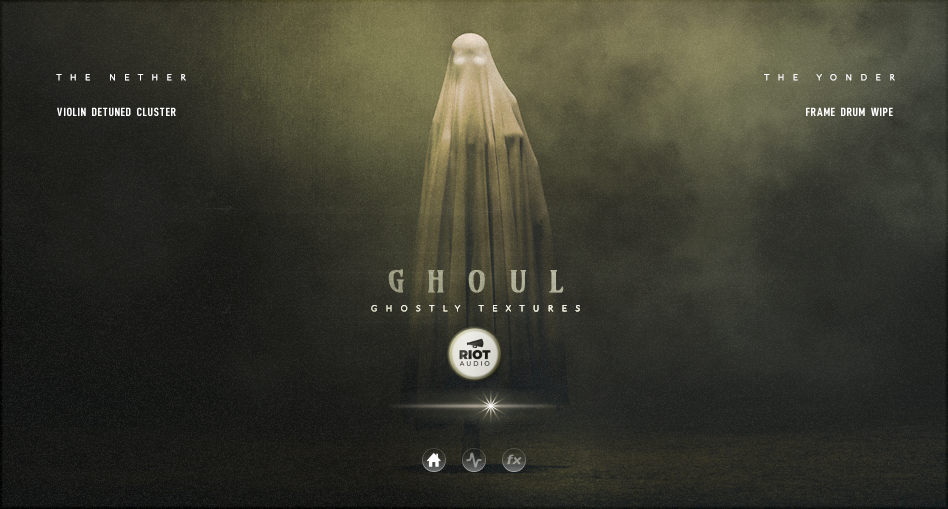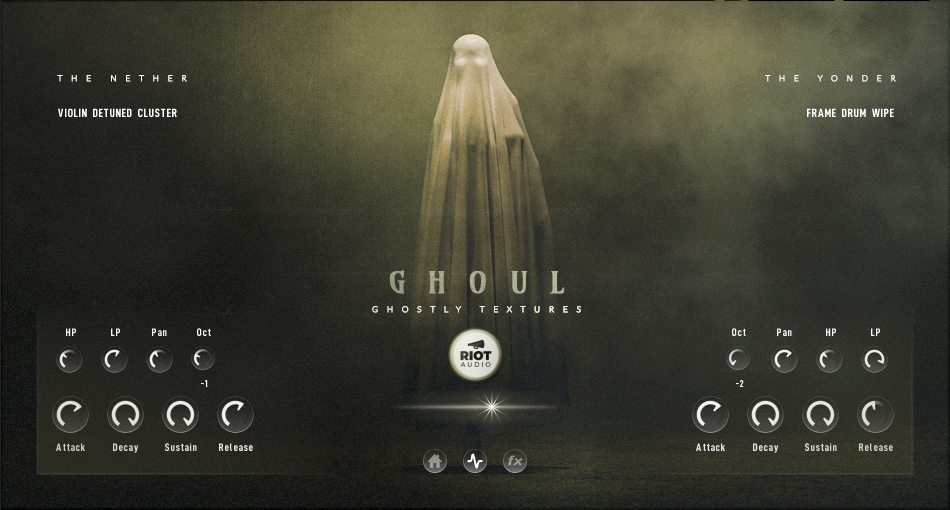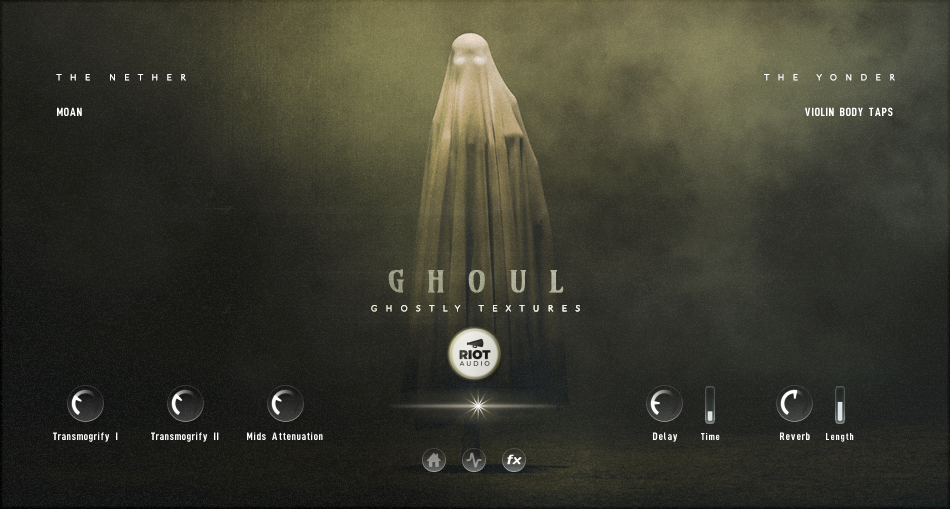by Riot Audio
Ghoul Ghostly Textures is a cinematic instrument inspired by the best of contemporary elevated horror for Native Instruments’ Kontakt.
Based on long, evolving performances of aleatoric violins and vocals, it contains 40 meticulously crafted long, medium and short ghostly textures.
Ghoul Ghostly Textures is great for horror/thriller genre scoring for games, film and TV.
This deceptively simple library packs a big punch when it comes to evoking the supernatural.
Please note: FULL retail version of Kontakt 6.6.1 or later is required. NOT for Kontakt Player.
$39.00
The idea behind Ghoul Ghostly Textures is simple.
To combine carefully crafted vocal and vocal-like sounds (e.g. a wiped frame drum) with a selection of atonal, aleatoric violin articulations, with filters, tuning and impulse response insert effects.
This allows for a broad range of horror-inspired sounds ranging from gently uncanny to outright terrifying.
Ghoul Ghostly Textures is built with two layers: “The Nether” (A) and “The Yonder” (B).
The home screen is the master view and contains sound source selection menus for both layers.
As well as an A/B balance slider for adjusting the balance between the two layers, there is a volume knob (the Riot Audio logo) for gain adjustment of the individual patches.
You’ll also notice the ghoul’s eyes gleaming if you adjust the modwheel – all patches are dynamically mapped to CC1 for smooth transitions, buildups and fine control of volume and presence.

All performances are a minimum of 50 seconds long, with some as long as eight minutes.
The sample start is set to random for each sample, effectively giving the instrument an almost unlimited number of round robins!
As the samples are frequently stretched across several notes or even octaves this also helps to ensure a realistic complexity and variation in the samples being played back simultaneously.
In the layer screen you can go deep into customising the two selected texture layers.
There are high and low pass filters, allowing you to reduce or even altogether eliminate the high frequency harshness in some of the samples and to be ultra selective with which frequencies of each sound source you want to poke through the mix.

There are also layer-specific panning controls and a useful octave tuner, which allows for creative manipulation of the source audio by stretching it out (lower octaves) or speeding it up considerably (higher octaves).
Finally, there are ADSR envelope controls for each layer individually, allowing for subtle or even major differences in the envelope of each sound source.
For example, it allows for evolving textures such as a combination of a fairly fast attack low passed sound with a gradually emerging harsher texture with more high frequencies.

These controls are for special IRs (Impulse Responses) custom recorded for this library – one based on a crackly old tape and the other a human growl.
Use them sparingly for a bit of extra unholy magic or turn them up to the full for a huge discordant brew of sound.
This control is there in order to compensate for some of the side effects of the “transmogrification”.
The Impulse Responses can colour the sound in a mid-heavy way, this control allows for dialling those excessive mids back again.
The Delay section comes with controls for mix amount and delay timing.
The reverb section is simple and allows for control of reverb length and mix amount.
You must be logged in to post a review.
Jenny (verified owner) –
Very creepy indeed. Fantastic library 🙂